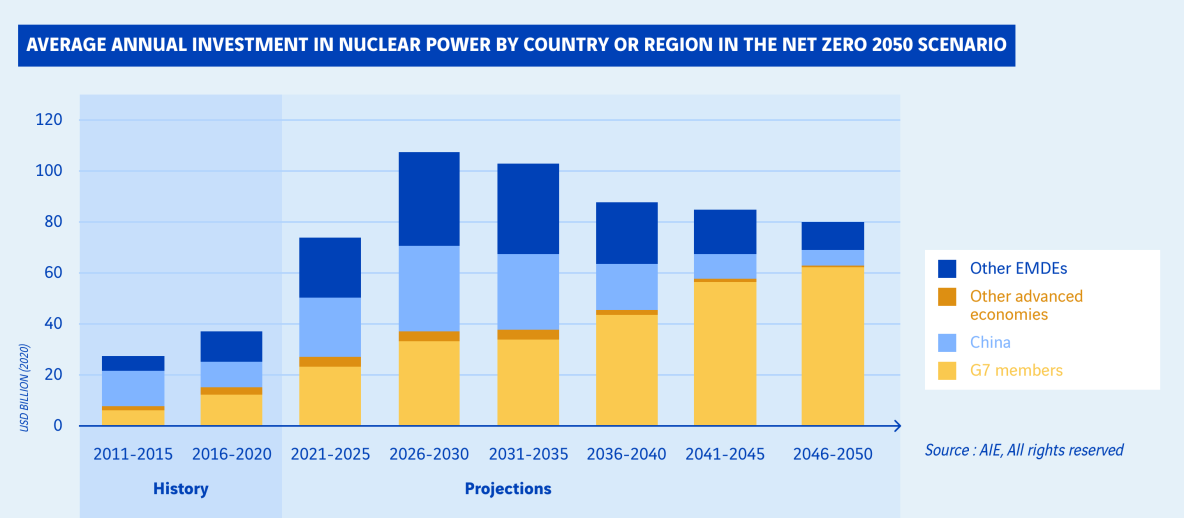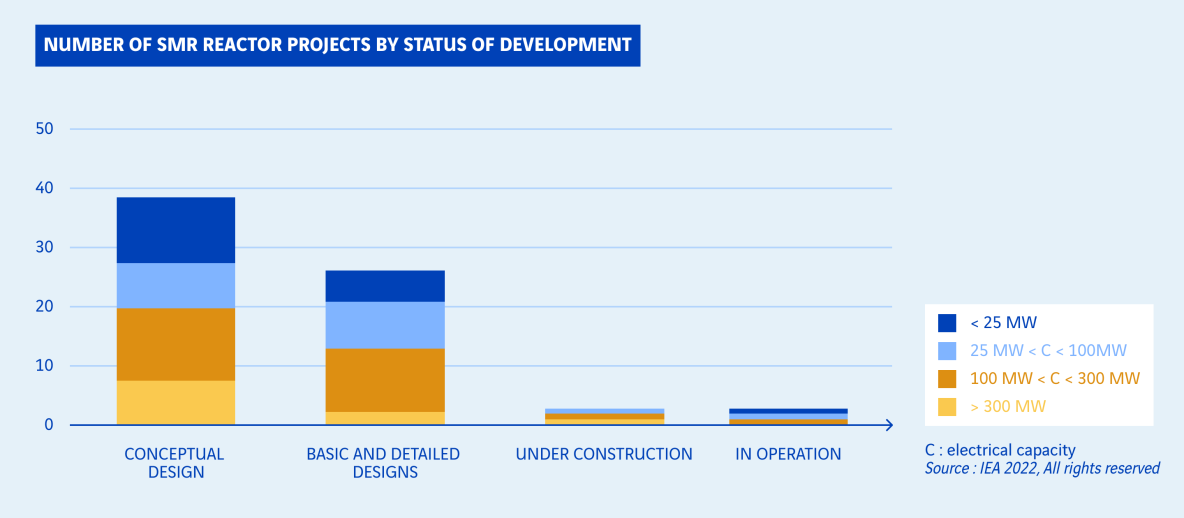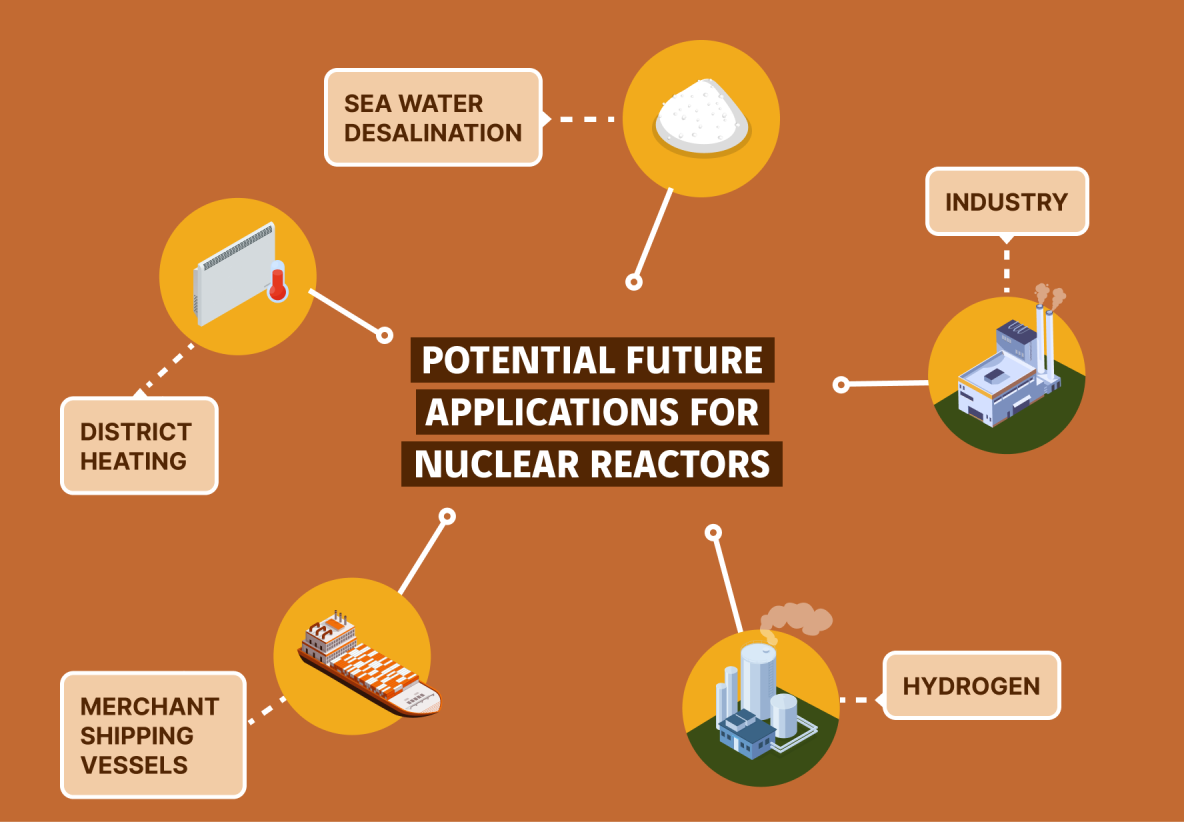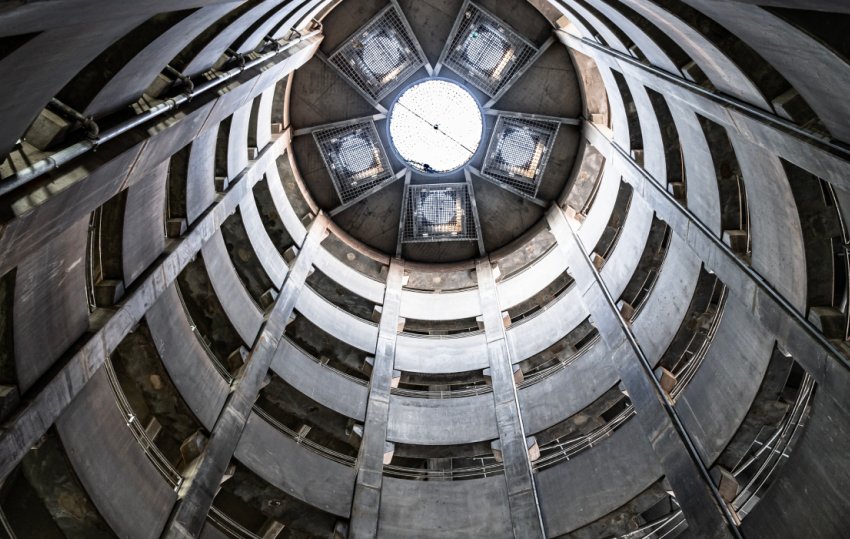
The groundbreaking civil nuclear fission sector
Nuclear power is touted as one of the solutions for moving the energy transition forward and allowing countries to maintain their sovereignty, which explains why public authorities around the world are taking a renewed interest in this energy source.
What innovations and opportunities lie in store for the world’s civil nuclear industry?
On the same focus
France, the land of nuclear power
Fusion: the energy creating high hopes
Fission: the historical nuclear energy
Nuclear power has a future
The International Energy Agency (IEA) makes regular updates to its “Net Zero by 2050” report, which is aimed at preparing the energy sector for the global objective of achieving net zero by 2050. The IEA’s roadmap may shine the spotlight on innovative solutions that have reached an advanced stage of development, but it fails to consider such technological breakthroughs as nuclear fusion. Although small modular reactors (SMRs) have a role to play in the net zero pathways, expectations are high for developing large pressurised water reactors (Generation III and III+ PWRs, such as the EPR and EPR2 in Europe, and its competitors, namely the AP1000 in the United States and Hualong-1 in China).
The Fukushima accident in Japan in 2011 had the effect of putting the brakes on ambitions to scale up the nuclear power sector. Some 10 or so years later, nuclear power seems to be making a comeback on political agendas around the world. Several countries have recently taken steps to increase the service life of their legacy power plants, including plans to build new nuclear facilities. Five countries in Europe are already venturing down this road, including France. Canada and the United States recently introduced a tax credit scheme for producing nuclear energy. China is maintaining its strategy of ramping up its nuclear power capacity with every intention of accelerating its deployment programme, while the rest of the world is enthusiastically embracing nuclear power. VINCI Construction subsidiary Freyssinet has already taken part in building 150 reactors around the world and was recently awarded contracts for nuclear power plant projects in Bangladesh and Hungary. The fast expansion of the nuclear construction sector in emerging markets and developing economies will typically be dependent on importing the required nuclear technologies. VINCI Construction subsidiary Nuvia is drawing on its expertise in nuclear power to support and guide nuclear development programmes in 12 countries around the world.
VINCI Energies
Adaptations, innovations and new applications for nuclear fission
Compact but powerful: small modular nuclear reactors
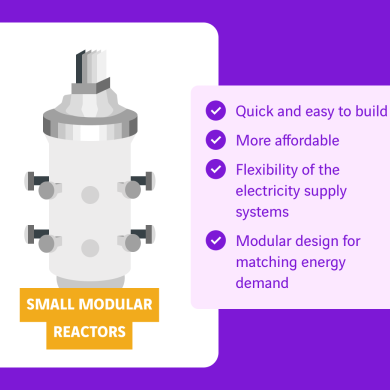
Small modular reactors (SMRs) are the “small” revolution sweeping the nuclear industry. With power outputs ranging from 10 to 300 MW, compared to the 1,000 MW delivered by most conventional reactors, SMRs promise to be quicker and easier to build and consequently more affordable. SMRs can be used to meet the growing need to inject greater flexibility into today’s electrical systems in response to the intermittency issues associated with solar and wind power sources. In recent years, public authorities in Europe, Asia and North America have significantly ramped up their support for developing SMRs with investments reaching several billions of dollars.
Fission of the future: new uses for nuclear reactors?
The vast majority of commercial reactors are currently designed to generate electricity, but nuclear fission energy could be harnessed for other applications in the future. For example, nuclear reactors could take over from fossil fuels to produce the heat needed to power industrial processes and district heating networks. There is also talk of using nuclear energy to generate hydrogen, desalinate sea water and fuel the propulsion systems aboard merchant shipping vessels. According to estimates, using electronuclear energy to produce only 4% of the hydrogen currently generated would reduce CO2 emissions by 60 million tons a year. Therefore, SMRs have a key role to play in promoting these new uses alongside large reactors.
I’ve been working in the sector for 30 years and I’ve never known a more conducive period with so many development prospects.
Bruno Lancia, CEO of VINCI Construction subsidiary Nuvia
Regeneration: a disruptive technology with a stumbling block
What would happen if industry switched over to a radically different form of fission energy that used fewer resources? Regeneration takes advantage of the spent fuel to deliver the same quantity of energy, but using 200 times less natural uranium. However, regeneration can only be carried out in a fast-neutron reactor, which creates a whole new set of technical constraints. So what type of cooling method would be used? A system involving molten salt, gas or lead? Tests are currently underway. At a time when light water-cooled reactors continue to dominate the market and uranium costs are still low, migrating to this type of technology would require major investments and the need to plan several decades ahead.
Our aim is to reinforce our role as a leading player in the industry. The big shift in the nuclear sector is a necessary step in the transition to low-carbon energy. In that sense, it is in the common interest.
Christophe Caizergues, head of the Nuclear division, VINCI Energies
Sources :
International Energy Agency, www.iea.org
Most viewed
Vous aimerez aussi
Words from researchers: let's fight stereotypes!
Charlotte, a research fellow at École des Mines, and Erwan, a university professor and researcher at AgroParisTech, talk…
Fondation VINCI pour la Cité: opening the door to others is another way of reaching out!
With some 1.3 million organisations and 2 million employees, France can lay claim to a dynamic network of associations…
Sea water desalination: a solution for turning the tide on the water scarcity crisis?
As water shortages continue causing havoc in a growing number of regions around the world, an age-old idea is experiencing a…
